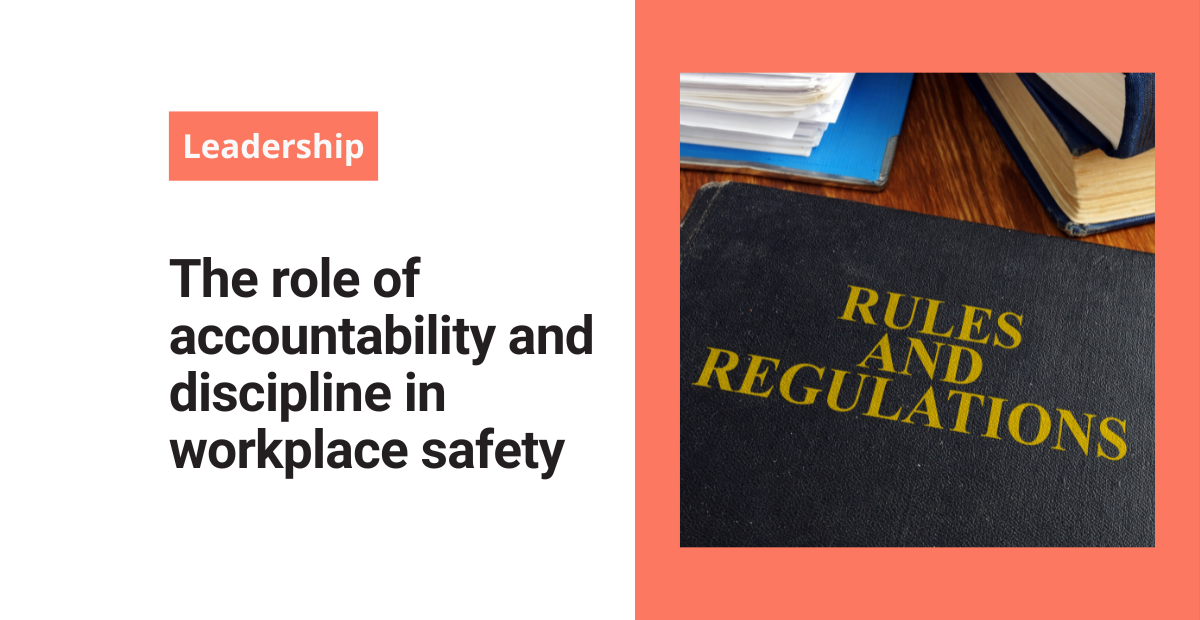One of the very first things I let any potential employer know is that I will not be the “hammer” force when it comes to disciplining EHS matters. I don’t believe it builds trust, and it can deteriorate any EHS program fairly rapidly, in my opinion. The EHS team should be a trusted partner that people can approach for help. If workers fear disciplinary consequences, they won’t speak up even when serious issues arise.
Having said that, I do still believe that accountability and discipline are essential at every level of the organization hierarchy. In this post, I’ll discuss the role that these variables play in creating a safe work environment for everyone.
Accountability goes both ways
So, what kinds of problems can you expect when there’s a lack of accountability and discipline?
The answer is simple: your EHS program will be almost entirely ineffective. Rules are just recommendations when there is no action for infractions. Let’s separate these out for a minute.
First, you have accountability. You have accountability for employees doing the right thing and managers for holding employees accountable by discipline.
Oftentimes, managers won’t hold their employees accountable because senior leaders don’t check to make sure that the program requirements are met. It’s a common theme in organizational performance: safety starts at the very top.
You simply can’t have an effective program if the CEO is not driven regarding safety. What’s important to the CEO will be important to the VP’s. They then transfer those values to senior management, which eventually trickles down from floor managers to frontline workers.
An example of accountability at work
I remember one time the CEO of a large company (16K+ employees) was walking in the facility in designated walkways with dress shoes on. This standard was set by the company as okay as long as all employees in the shop had safety glasses, closed toed and heel shoes, etc.
The CEO took one step outside of the walkway to look at something, and an employee called him out. A shop hourly employee called out the CEO. He did, and the CEO was grateful. He actually thanked the employee for letting him know.
The employees appreciated and respected the CEO for that. That was one of the best examples of accountability at all levels that I’ve ever seen. And it’s no surprise that the EHS program at that company was robust and very effective.
Poor discipline, poor results
On the other side of the coin, I once worked for a company where the CEO/Owner walked into the workshop area without safety glasses on. An employee called him out on it, and he looked at the employee and said “Yeah, well I own the place, so.”
Can you guess the difference in the performance of this EHS program versus the previous example?
We make things important to us, at work, which are important to our manager. How important do you think the employees took safety after that incident?
Bottom line: there must be consequences for unsafe actions for everyone regardless of their title. If you have a disciplinary process for EHS in your program (which you need to have if you don’t), you had better be using it.
We talk a lot in the safety field about implementing systems that eliminate the possibility of unsafe practices. And that should absolutely be the vision for any progressive EHS program.
However, accountability is essential for those instances where people act outside of the safe system design. Without it, you’ll have a hard time accomplishing the safety goals you have for your company.

Jason Hathcoat
Jason is a seasoned EHS professional with more than 17 years of experience working in health and safety. He currently works as an EHS manager for a large global HVAC company.




